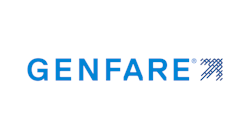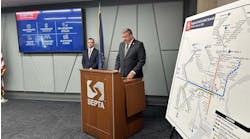The most effective way to achieve equitable mobility is better service, not cheaper bad service. An important prerequisite for better service is a fare collection system that provides advanced capabilities at a reasonable price and enables the transit agency to understand its community and tailor solutions to meet the needs of everyone in it, with particular attention to those with limited resources.
Low-income riders represent more than 35 percent of transit riders and are harder hit by transit costs than choice riders. In addition, more than 10 percent of Black and Hispanic people are unbanked and almost 20 percent of Black and Hispanic adults don’t have smart phones. A bank account, credit card or smart phone is typically required to take advantage of fare discounts or convenient payment options provided by monthly pass purchases, mobile ticketing or open payments.
Fare free?
The idea that transit should be a free public service has been around for a long time but gained prominence during the pandemic, when many agencies eliminated fare collection to ensure social distancing between riders and transit workers. The practice was meant to be temporary, but some advocates believe it should be made permanent.
The pandemic showed that transit is an essential public service. Transit-dependent riders earn less than choice riders and spend more of their incomes on transportation. But not everyone believes free fares is the best way to provide equitable mobility. There are many agencies that have faced challenges with vandalism and rider safety due to unruly passengers and an increase in non-destination riders.
This is not to say free transit never makes sense. For small urban areas with modest ridership, large rural areas with low ridership or university-dominated communities, going fare free may work. Clearly there are special cases when optimizing fare policy to meet local needs sometimes means charging no fare at all.
Fare payment is by no means the impediment to transit use that some portray it to be. On the contrary, it serves several important functions:
• Generates essential revenue. For larger agencies, fare collection generates a substantial percentage of the budget which cannot be easily replaced. Given the scale and uncertainty of federal funding that would be needed to make transit free nationwide, it seems likely eliminating fares would necessitate a reduction in service.
• Provides valuable ridership information. A modern fare collection system using electronic fare media generates detailed ridership information of great value for service planning. The data can be analyzed to determine not merely how many riders use a particular route but where and when they boarded, what routes they transferred to, and – by pairing round trips – where they got off. The transactional database can be analyzed to determine travel patterns, preferred fare media, frequency and other characteristics of use and shifts over time.
• Serves as a gatekeeping function. Charging even a nominal fare significantly reduces difficulties arising from problem passengers.
When larger transit agencies weigh the advantages of fare collection against the claimed benefits of fare-free operation, they will choose to pursue transit equity within their existing revenue framework.
What is the best way to achieve equitable mobility?
Genfare supports equitable mobility but does not believe eliminating fares is a practical way to reach this goal for most agencies. The best way to achieve equitable mobility is to improve service while optimizing fares to meet specific community needs through fare discounts for low-income riders and fare capping.
Riders value on-time performance, service frequency and convenient locations more than a free ride. This is as true for transit-dependent riders as it is for choice riders.
A modern fare collection system provides the tools transit agencies need to attain equitable mobility while still generating essential revenue in three ways:
• It puts the sophisticated capabilities needed for a targeted approach within the reach of every agency. Affordable cloud-hosted fare technology can be scaled to the needs of any agency regardless of the size of its ridership or budget. Unlike the old days, when vendors installed fare collection hardware and agencies were left on their own to operate it, today’s fare-collection-as-a-service approach means vendors and agencies are active partners throughout the system’s service life. Enhanced capabilities are continually introduced in response to evolving technology and market demand and made available to participating agencies.
• It enables agencies to understand their communities. The detailed data recorded for every fare transaction and event, combined with the robust analytical and data visualization tools provided by modern systems, enables agencies to gain a much better understanding of their customers, an essential step in developing responsive solutions.
• It lets agencies accept any payment medium riders have in their pockets, whether it’s cash, a fare card or credit card, a mobile wallet or a “virtual ticket” displayed on a smart phone. Coupled with affordable technology and detailed knowledge of the communities they serve, this means transit providers can deliver fare solutions tailored to the needs of all of their riders, including those with limited resources.
Here are ways fare collection technology can promote equitable mobility while supporting other important transit goals:
• Fare optimization, creating fare solutions adapted to the needs of different rider groups. For example, eligible low-income riders can be provided with a personalized fare card at little or no charge that they can reload periodically with targeted reduced-fare products using cash – or, if the agency chooses, they can ride for free. To avoid requiring applicants to travel to a distant location, agency staff can hold pop-up enrollment events at community centers, public libraries or community events using portable card production equipment.
• Onboard acceptance of cash, the one fare medium readily available to all, is of continuing importance. Some transit riders – many of them minorities protected under Title VI of the Civil Rights Act of 1964 – lack the bank accounts and/or smart phones needed for electronic payment. For the foreseeable future, transit agencies will need to continue to accept cash.
• Offboard cash acceptance enables riders to add value to their fare cards using cash at a ticket vending machine, an agency ticket office, or retail sales agent equipped with a point of sale terminal. A partnership with a third-party provider that sells agency-branded fare cards and other preloaded cards at in-store kiosks provides another way for riders to pay with cash.
• Fare capping allows riders to limit their total fare spend based on daily or monthly fare pass maximums. Fare capping can be either card-based or account-based or both.
• Low-cost media for social service organizations. Transit agencies have long sold or given low-cost fare cards to social service agencies for distribution to their clients. With the aid of sophisticated back office systems, transit operators can provide social service agencies with an online portal to make it easier for them to deliver low-cost media efficiently.
• Contactless payment cards for the unbanked. Open payment technology enables fare equipment to read “tap and go” credit and debit cards, which are replacing older bank cards that rely on a magnetic stripe. Contactless cards configured as reloadable gift cards are expected to be widely available through retailers, where unbanked riders can buy and recharge them using cash. In addition, the cards are likely to be adopted by public agencies distributing unemployment or public assistance payments. That means unbanked riders will be able to pay for transit using a card just as choice riders do.
• Employer transit benefits, in which businesses enable their employees to use transit at reduced cost, is of great value to riders, who can save in two ways – by paying for transit using pre-tax dollars and receiving a subsidy from their employer. The transit benefit also helps businesses to help recruit and retain employees in what are often high-turnover jobs.
Conclusion
The most effective way to achieve equitable mobility isn’t to eliminate fares but rather to harness advanced fare collection technology to improve service for all riders – essential workers, low-income and choice riders. Many transit operators have come to the same conclusion.
Today’s fare processing solutions let an agency do three things to promote equitable mobility:
- Obtain advanced technology at an affordable price;
- Use the data collected by that technology to understand its community;
- Leverage this insight to tailor fare solutions that will meet the needs of all its customers, including essential workers and low-income riders.
The stresses of the pandemic, rising gas prices and inflation mean transit will be increasingly important to a large segment of the public. In addition, reducing automobile use remains an essential strategy in the effort to combat climate change. Transit must accommodate a wide range of riders if it is to address these larger societal needs. Decision makers must also recognize that in a time of political polarization and uncertain federal funding, fares provide a reliable local revenue stream.
The pursuit of equitable mobility must be part of an integrated strategy that takes the needs of all riders into account, including transit-dependent and choice riders. A flexible fare payment system that can meet a wide variety of needs is an important part of this approach. Better service for everyone is the surest way to achieve the goal of equitable mobility – a world in which all can move forward, leaving no one behind.
----------------------
Daria van Engelen, Genfare’s chief revenue officer, has more than 20 years of experience in both the public and private sector. She has spent her career in various surface transportation roles in rail and transit – from operations to service delivery and business development. Her strength lies in her ability to open the line of communication between customers, experts and businesses to support solutions that result in better outcomes. Daria currently leads Genfare’s business development, marketing and customer care teams.

Daria van Engelen | Chief Revenue Officer, Genfare
Daria van Engelen, Genfare’s chief revenue officer, has more than 20 years of experience in both the public and private sector. She has spent her career in various surface transportation roles in rail and transit – from operations to service delivery and business development. Her strength lies in her ability to open the line of communication between customers, experts and businesses to support solutions that result in better outcomes. Daria currently leads Genfare’s business development, marketing and customer care teams.



